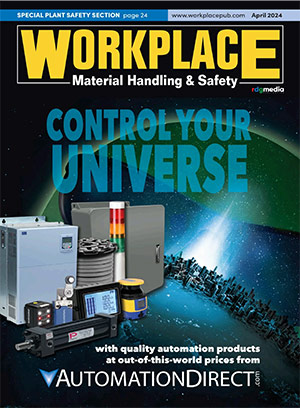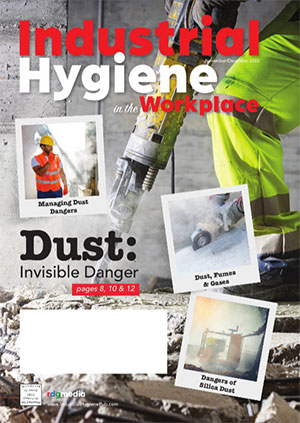How to Prevent Combustible Dust Incidents in the Workplace
Jessica Barrett, Safeopedia
Dust in the workplace might not seem like a serious hazard. After all, what workspace doesn’t accumulate a little dust? But, with the right materials and under the right conditions, that dust could result in a damaging and potentially fatal fire or explosion.
This article will cover the basics of combustible dust safety: what combustible dust is; where it comes from; and how to protect yourself and your workplace from it.
What Is Combustible Dust?
OSHA defines combustible dust as: “A solid material composed of distinct particles or pieces, regardless of size, shape, or chemical composition, which presents a fire or deflagration hazard when suspended in air or some other oxidizing medium over a range of concentrations.”
In layman’s terms, combustible dust is any fine material that can catch fire and explode when mixed with air.
These aren’t always the types of material you would normally consider combustible and dangerous. It can include metal dust, wood dust, plastic or rubber dust, coal dust, biosolids, dust from certain textiles, and even organic dust, like flour, sugar, paper, soap and dried blood.
How Is Combustible Dust Produced?
Combustible dusts are created during the transportation, handling, processing, polishing and grinding of the materials. Abrasive blasting, crushing, cutting and screening dry materials can also create dust.
The types of workplaces most at risk of combustible dust include:
- Food production
- Woodworking facilities
- Metal processing
- Recycling facilities
- Chemical manufacturing (rubber, plastics, pharmaceuticals)
- Grain elevators
- Coal-fired power plants
In reality, however, any workplace that generates dust may be at risk. This is why it’s essential to conduct a thorough risk assessment. For reference, OSHA offers a lengthy list of materials that could produce combustible dust.
How Dust Explosions Happen
According to the NFPA, it takes as little as 1/32 of an inch of accumulated dust to cause a catastrophic explosion. But the amount of dust is only one factor. There are five elements that are necessary for dust explosions to take place. Collectively, these are known as the “dust pentagon.”
The first three elements are the same that are found in the fire triangle. These are the elements required for any kind of fire. The last two items are specific to the dust pentagon:
- Fuel (in this case, combustible dust)
- Ignition source (heat)
- Oxygen
- Dispersion of dust particles in sufficient quality and concentration
- Confinement of the dust cloud
Assessing Combustible Dust Risks
Even the best housekeeping practices can’t keep dust from accumulating. It’s important, then, to know how to identify combustible dust hazards.
Use these guiding questions to determine whether your workplace may be at risk:
- Are there documented cases of dust explosions in workplaces that use or house similar materials?
- Do you manufacture or use materials that can be turned to dust?
- Do you carry out activities that generate dust, such as abrasive blasting, cutting, grinding, sieving and polishing?
- Does your workplace have ignition sources like sparks and flames?
- Is it possible for dust to enter equipment?
- Is smoking permitted in close proximity to production areas?
- Are there open, overhead and hidden areas where dust can accumulate, like support beams, false ceilings and ducts?
- Is there a housekeeping program in place to ensure that dust is regularly removed?
- Are employees educated about combustible dust hazards and best practices for preventing explosions?
Controlling Combustible Dust Hazards
Combustible dust incidents are entirely preventable. If your workplace has combustible dust risks, there are various safety measure you can take to prevent an unwanted ignition or explosion.
First, you can attempt to eliminate flat, horizontal surfaces where dust can accumulate, like window ledges and light fittings. Then, implement engineering and administrative controls.
Engineering Controls
- Use appropriate and properly installed systems to extract and collect combustible dust
- Ensure explosion venting is directed away from employee areas
- Properly maintain all electrical and mechanical equipment
- Bond and ground equipment to control static electricity
- Remove ignition sources, including open flames, sparks, friction and heat sources
Administrative Controls
- Develop and implement a combustible dust-control program
- Conduct dust inspections at regular intervals
- Establish a housekeeping program that includes regular dust removal
- Develop an ignition-control program to reduce or eliminate ignition sources
- Train workers to use the right equipment and proper technique when cleaning combustible dust
- Educate employees about the hazards of combustible dust and how they can do their part to control or eliminate the risk of fire or explosion
Rules and Standards to Work By
If combustible dust is a problem in your workplace, get familiar with NFPA 652: Standard on the Fundamentals of Combustible Dust. It provides the basic principles and requirements for identifying and managing fire and explosion hazards from combustible dust. Failing to comply with this standard can leave you open to serious fines and even more serious injuries, if an incident occurs.
OSHA looks to this standard for guidance when it comes to best practices for preventing combustible dust fires and explosions. Those who don’t take the necessary steps to protect workers can be fined for violations under 18 different standards as part of OSHA’s Combustible Dust National Emphasis Program. This includes the General Duty Clause and 29 CFR 1910.22, the main housekeeping standard.
Final Thoughts
Education and awareness are key to ensuring that combustible dust risks are identified and managed properly. With a strong hazard management program, you can ensure the continued safety of your workers, your facility, and your business. WMHS




